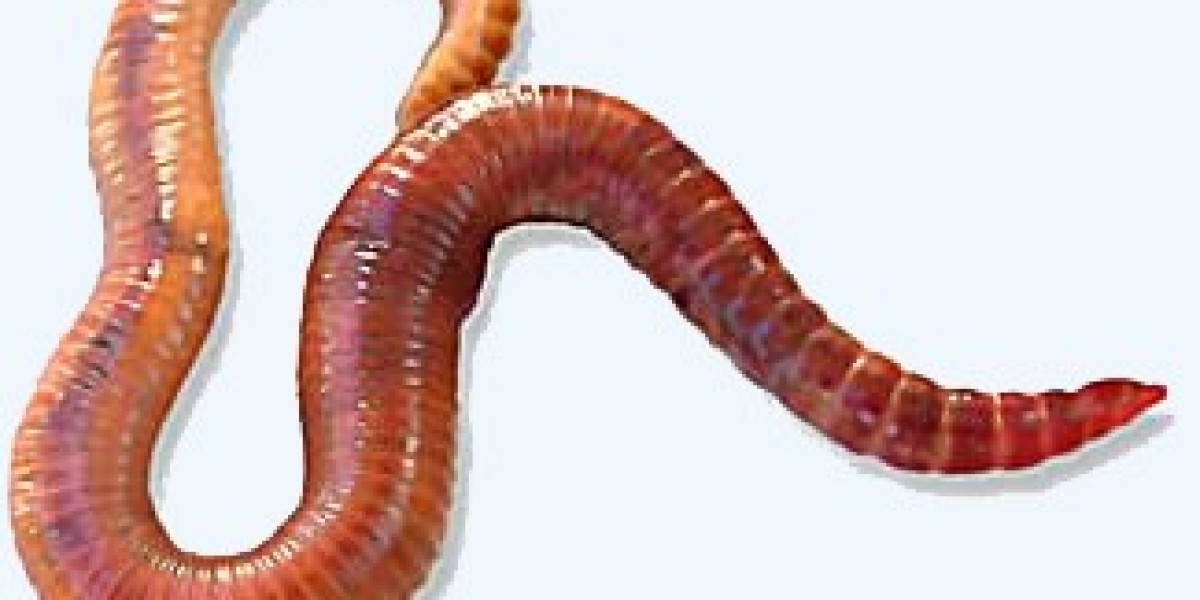Red Wiggler compost worms (Eisenia fetida) are a gardener's best friend when Composting Worms it comes to sustainable and effective composting. These small but powerful worms can turn ordinary kitchen scraps and organic waste into nutrient-rich compost that benefits both plants and soil. Whether you're an experienced gardener or just starting, Red Wigglers offer an efficient and eco-friendly solution to waste management. This guide will delve into the benefits of Red Wiggler worms and provide practical tips for setting up and maintaining your worm composting system.
The Advantages of Using Red Wiggler Compost Worms
Red Wigglers are uniquely suited for composting due to several key characteristics:
Fast Decomposition: These worms are incredibly efficient at breaking down organic matter. They can consume half their weight in food each day, quickly converting kitchen scraps into valuable compost.
High-Quality Compost: The compost produced by Red Wigglers, known as worm castings, is rich in nutrients such as nitrogen, phosphorus, and potassium. This organic material enhances soil fertility, promotes healthy plant growth, and improves soil structure.
Low Maintenance: Red Wigglers are hardy creatures that require minimal care. As long as their basic needs for food, moisture, and darkness are met, they will thrive and multiply, ensuring a continuous supply of compost.
Compact and Odor-Free: Unlike traditional composting methods, which require large outdoor spaces and can produce odors, a Red Wiggler worm bin is compact and can be kept indoors. When properly maintained, it remains virtually odor-free.
How to Start Your Red Wiggler Compost Bin
Creating a compost bin with Red Wiggler worms is easy and can be done with a few simple steps:
Select the Right Bin: A plastic or wooden bin with a lid is ideal for containing the worms and keeping out light. Ensure the bin has ventilation holes and drainage to maintain a healthy environment for the worms. The size of the bin should match the amount of waste you plan to compost.
Prepare the Bedding: Red Wigglers need a moist bedding material to live in. Shredded newspaper, cardboard, straw, or coconut coir are all good options. The bedding should be damp but not soaking wet. Fill the bin about halfway with bedding.
Introduce the Worms: Add your Red Wigglers to the bin, placing them on top of the bedding. They will naturally burrow down into the bedding, acclimating to their new environment.
Feed the Worms: Start by adding small amounts of organic waste, such as fruit and vegetable scraps, coffee grounds, and crushed eggshells. Avoid adding meat, dairy, and oily foods, as these can create odors and attract pests. Bury the food scraps under the bedding to keep the bin clean and odor-free.
Maintain the Bin: Keep the worm bin in a cool, dark place with a temperature range of 55°F to 77°F. Check the moisture level regularly and add water if the bedding becomes dry. Feed the worms once or twice a week, adjusting the amount of food based on how quickly they consume it.
Harvesting Worm Castings
After a few months, your Red Wiggler bin will produce nutrient-rich compost that can be harvested and used in your garden:
Harvesting the Compost: To collect the worm castings, push the compost to one side of the bin and add fresh bedding and food to the other side. The worms will migrate to the new material, allowing you to remove the finished compost.
Using the Compost: The worm castings can be mixed into garden soil, used as a top dressing for plants, or brewed into compost tea for an extra nutrient boost. This compost is rich in essential nutrients and beneficial microbes that enhance soil health and plant growth.
Troubleshooting Common Issues
While Red Wiggler composting is generally easy, you may encounter some challenges along the way:
Excess Moisture: If the bin becomes too wet, add more dry bedding to absorb the moisture. Ensure the bin has adequate drainage to prevent water from accumulating at the bottom.
Odor Problems: A foul odor may indicate overfeeding or poor ventilation. Reduce the amount of food scraps and make sure the bin has sufficient airflow.
Worms Escaping: If worms are trying to leave the bin, it could be due to unfavorable conditions such as extreme temperatures, too much moisture, or insufficient food. Check the environment and make necessary adjustments to keep the worms happy.
Conclusion
Red Wiggler compost worms are an invaluable resource for gardeners and anyone interested in sustainable waste management. By setting up a simple worm bin, you can recycle organic waste and produce high-quality compost that benefits your garden and the environment. With minimal effort, these industrious worms will provide you with a continuous supply of rich, fertile compost that can transform your soil and support healthy, thriving plants. Whether you're composting indoors or out, Red Wigglers offer a practical, eco-friendly solution for turning waste into garden gold.

